If Moses were to descend upon us and write the Ten Commandments for salespeople... "Thou Shalt Always Be Closing" would likely be the first one.

But what does 'Always Be Closing' really mean? Does it mean that you have to be an aggressive salesperson - perpetually pushing the prospect to close the deal?
Not necessarily.
You may be a relationship builder, and believe in developing strong personal and professional relationships with prospects,
or a hard worker who is always willing to go that extra mile,
or a lone wolf who likes to do things your own way - a rule-breaking cowboy,
or a problem solver focusing more on customer service.
Irrespective of what kind of sales rep you are, it doesn’t make you a great one if you haven’t mastered the art of closing. The months or weeks of hard work put into prospecting a client will go down the drain if you don’t close the deal.
Closing is the final stretch you need to cross to bring home the bacon.
And to lend you a hand, we enlist different techniques employed by top-performing salespeople to close deals and in which scenarios you could use them.

Modern Sales Closing Techniques To Close More Deals
1) The Assumptive Close

A popular closing technique, the assumptive close is a strategy where reps negotiate with the prospects as if the deal has been struck. The ‘assumptive close’ supposedly works because it doesn't allow the prospect to sit on your offer, giving them time to conjure up issues and objections, which can result in them backing out of the deal completely. Although, do employ it with caution considering that you are assuming a decision that is rightfully theirs to be made. This could be offensive if used preemptively.
When should you use it? Sales reps use this technique when the prospect has checked most of the boxes in each step of the sales process but has not yet confirmed the deal. Use it only if you think the prospect is mostly on your side and is just slightly apprehensive. If you think the prospect is looking for something else or is looking at competitors who may have that something else, best not to use this especially if you’re sending cold emails Kevin Shivley, SVP of Marketing at Rebrandly, warns against using this close in cold emails,
I’m all for the assumptive close, but the assumptive meeting in a cold email is such a lazy move. When you’ve shown no value, barely told me what you do, and are already instructing me to click your calendar link and spend time setting up your demo for you? I hate you already.

Example: When can we start, Jane? Next week?
💡Here is a not-so-fun fact: 80% of sales require at least 5 follow-ups before closing the deal. So, we have compiled a list of 50+ follow-up email templates for you. Download the free e-book.
2) The Take Away Close

Threaten to take away the candy and you’ll see how well children behave.
This works perfectly with prospects too. You're on the verge of closing the deal, but your customer is reluctant to proceed. They have suddenly come up with complaints to drive a bargain. A novice rep could potentially comply with their demands and offer whatever they ask just to seal the deal.
On the other hand, an experienced sales rep wouldn't budge. Using the Take Away closing technique, you can offer to withdraw the whole deal from the prospect to push them to accept the offer. The reason why it's effective is that letting go of a potential client shows how confident you're in your product, which then gets the prospect to reconsider the good product they may be missing out on.
Will Yang, Head of Growth and Customer Success at Instrumentl, swears by this method. He says,
I'm a big fan of the ‘stick to your guns’ approach. I find that you can get far more out of a deal if you're willing to walk away from it and then come back later with a new offer. It's important to remember that the other party also wants to close the deal! If they don't, they're stuck with whatever they already have—and who wants what they already have? Everyone is looking for ways to improve their situation, and if you're able to make that happen for them with your offer, they'll be motivated to close with you.
When should you use it? This technique can be used for prospects who happen to be a time-sink and take up a lot of your time – with little to show by way of progress. Again, use this technique only once you know that they’re really convinced of the value they can get from using your product or service. Throwing it to prospects who may not be so convinced can jeopardize your deal.
Example: We've spent the last weeks trying to make this work, and I appreciate the time and effort that you put into this. So here's the suggestion: Let's spend the next 15 minutes trying to get this to the finish line. But, if we are unable to do that, let's take a step back and reconnect when you are really ready to pull the trigger on this.
Related: Here are the 25+ cold calling scripts to effectively handle different selling situations!
3) The Now or Never Close

Commonly referred to as the Urgency Close, the Now or Never Close is a hard close sales technique where you pressure the prospect to make a decision. This technique works when coupled with a special discount or freebie for a limited period.
When should you use it? This technique is best used when the prospect is on the line about buying your product. Similar to the takeaway close technique, a sense of urgency comes into play and the fear of missing out on a discount/limited-time offer nudges the prospect over the proverbial line to get your product.
Example:
Prospect: I love your product. Let's catch up next week to discuss the next steps.
Salesperson: I understand. But we have a special 25% disc
4) The Summary Closing Technique

Think of a well-executed closing argument delivered by a trial attorney in court. There are no new facts or concerns introduced here. Just a simple act of selectively summarizing the highlights and pointing toward the only logical conclusion that emanates from connecting the dots. The summary close works the same way. You give prospects a glimpse of the things that could get better upon using the product to nudge them towards buying it.
When should you use it? Summary close works great when you have gone through an extensive discussion/ evaluation, and it is now time to switch gears. It is especially useful to get the attention of managers who are in the process of buying multiple tools simultaneously. When you summarize, you remind them of your product and thus help them make a decision faster.
Example: So, Peter, over the last few weeks, I can see that your team has rolled out a great pilot of our customer success tool. With our product, you were able to monitor your customer health in real-time and focus on the right customer at the right time. We've already greenlit the feature request and reduced the price to $2500 per month. All that is left is for you to sign the dotted line and get started on improving your customer retention.
5) Something For Nothing Close
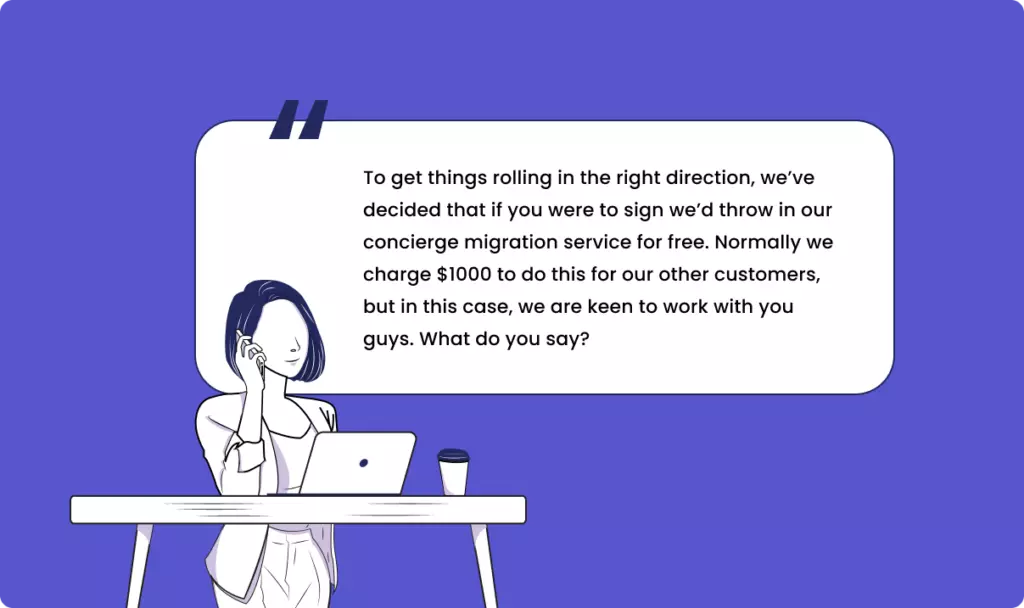
Humans tend to return good deeds.
Dr. Robert Cialdini's Principle of Reciprocity proves that it is a social norm of respond to a positive action with another positive action.
The ‘Something For Nothing Closing’ technique works around this concept. You give your prospect a free add-on or an extra feature in goodwill, and they will be obligated to do something in return – that something, in this case, can be buying the product. ‘Something For Nothing’ works because people like free things. But just to keep things clear, the freebie you give should be of value to them and less value to you. You can't offer them free months on a paid plan; that would be a loss for you, nor can you offer them handbags and ask them to sign up.
When should you use it? If you work for an early-stage startup without much social proof to show, this technique can work wonders for you. However, this isn't the most desirable closing technique as your company grows and gains brand authority.
Example: To get things rolling in the right direction, we've decided that if you were to sign, we would throw in our concierge migration service for free. We usually charge $1000 to do this for our other customers, but in this case, we are keen to work with you guys. What do you say?
6) The Objection Close
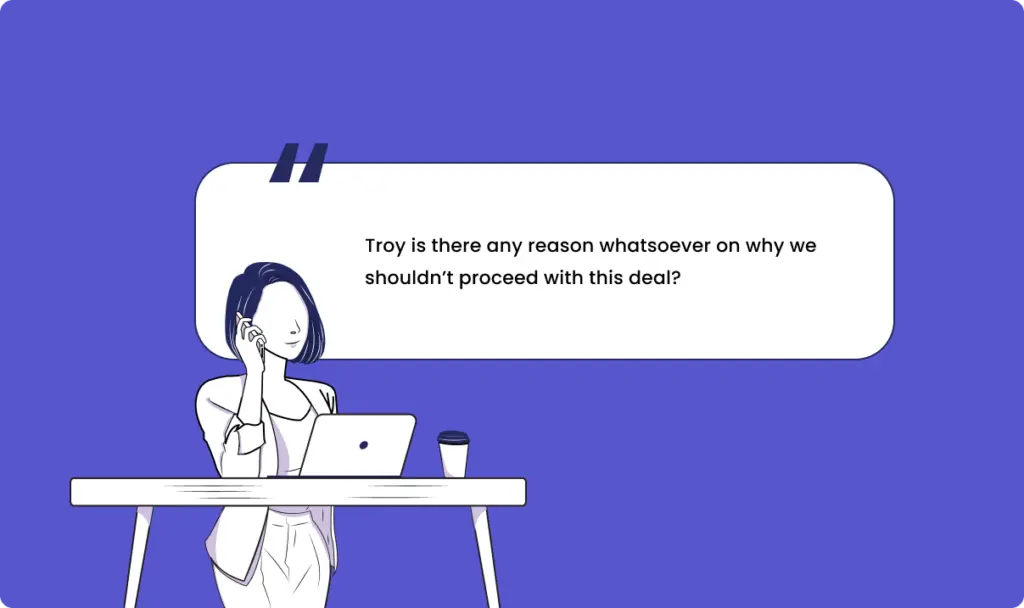
Once you have made sure that your prospect has understood everything about your product and what it has to offer, try closing the deal by asking them for any objections they might have with the product.
This approach allows the prospect to raise any final objections or doubts that they need to clear up without saying no to the deal.
When should you use it? This type of close works best with those prospects who are skeptical of your product and have concerns about it.
Example: Troy, is there any reason whatsoever on why we shouldn't proceed with this deal?
7) The Ben Franklin Close

Once you have made sure that your prospect has understood everything about your product and what it has to offer, try closing the deal by asking them for any objections they might have with the product.
This approach allows the prospect to raise any final objections or doubts that they need to clear up without saying no to the deal.
When should you use it? This type of close works best with those prospects who are skeptical of your product and have concerns about it.
Example: Troy, is there any reason whatsoever on why we shouldn't proceed with this deal?
8) The Sharp Angle Close

Sometimes you come across prospects who are better negotiators than you. They'll know how to make you run in circles to get what they want ultimately- either a discount, an add-on, or worse, make you give up on them. They bring this objection in the form of a challenge like 'can you deliver' or 'there is an issue' or so on. Using the sharp-angle tactic, you can answer this question with another relevant question in the hopes of closing the deal.
If you get a positive response, the deal is done and dusted. Otherwise, if you happen to get a negative reply, you know that they’re either not serious or there is another issue. Here you are given a second chance to clarify any other issues they have.
When should you use it? The Sharp Angle Closing Technique is best used when the prospect will most likely buy your product, but they have one nagging objection stopping them.
Example:
Prospect: If we go with your service, we would need XYZ by one month. Can you deliver that?
Salesperson: If I could deliver XYZ in a month, are you ready to jump on board now?
9) The Needs Close

Sometimes you come across prospects who are better negotiators than you. They'll know how to make you run in circles to get what they want ultimately- either a discount, an add-on, or worse, make you give up on them. They bring this objection in the form of a challenge like 'can you deliver' or 'there is an issue' or so on. Using the sharp-angle tactic, you can answer this question with another relevant question in the hopes of closing the deal.
If you get a positive response, the deal is done and dusted. Otherwise, if you happen to get a negative reply, you know that they’re either not serious or there is another issue. Here you are given a second chance to clarify any other issues they have.
When should you use it? The Sharp Angle Closing Technique is best used when the prospect will most likely buy your product, but they have one nagging objection stopping them.
Example:
Prospect: If we go with your service, we would need XYZ by one month. Can you deliver that?
Salesperson: If I could deliver XYZ in a month, are you ready to jump on board now?
10) The Visual Closing Technique
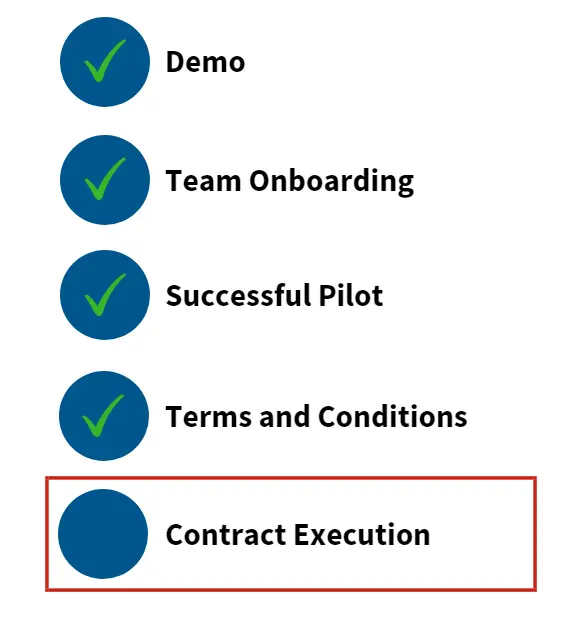
Using visual aids such as result charts, videos, or even tables with the pros and cons listed down, you can close deals in a more attractive manner. The Visual Close technique is quite popular among sales professionals and sales teams because it appeals to a prospect's visual perception, and as we all know, a picture is worth a thousand words.
It's easier for the prospect to visualize what you're trying to put forth. After all, the human brain processes an image 60 thousand times faster than it processes words.
When should you use it? This closing technique is especially useful when your prospects are interested in your product but are keener to know how you can help them. You can use previous case studies or create a presentation on how you can solve their pain points to close them fast.
Example: "These past few months have brought about fruitful conversations between us, and I've appreciated the time and effort you have put into this. I hope you feel the same way. Ever since we reached out to you, this is how far we have come…."
"Here is the good news. We have successfully completed all the steps required to make sure you can use our service effectively. All that is left is to put pen to paper and bring this thing home?"
11) The Empathy Closing Technique

Not every qualified lead has to be closed using leverage or pressure. Sometimes, especially in today’s buying environment, it's good to take the empathy route.
The Empathy Closing technique allows you to use emotion to understand your prospect's situation. When the prospect tells you that they aren't ready to make a decision, take the higher road and give them time to think. This sales strategy will show them that you care about them as fellow people and that you’re not here just to push your solution.
Empathizing with your prospects can help build a special bond with the prospect which can be useful in the long run.
When should you use it? We have to address the elephant in the room - the most common closing styles corner the prospect to decision-making. A lot of prospects and consumers, today, can be averse to such closing techniques because they have been employed so often or are not respectful of their time, needs or wants. Millennial and genZ prospects, especially, may find such confrontational and sometimes ‘exploitative’ tactics distasteful. So to cater to the prospects of today, you’ll need to use empathy as a key driver in your closing conversations.
Example:
Prospect: I don't think I can decide now. Is it okay if I get back to you in some time?
Salesperson: Sure. With this being an important decision and all, I understand. Should we schedule a call next Wednesday?
12) The Artisan Close

The Artisan Closing technique lets you highlight the amount of work, skill, and time invested in the product. It deviates from the usual sales closing strategy norms by focusing more on the behind-the-scenes of your product rather than the prospect or the benefits of your product.
When should you use it? This technique works best with prospects who appreciate something with a lot of effort and hard work put into it. Emphasizing that puts your product in good light and brings a new appreciation to the eyes of the prospect, making it easier to close.
Example:
Prospect: I've one doubt now. What kind of customer support can I expect from you guys?
Salesperson: Glad you asked. We’re obsessed with customer happiness. At XYZ, we try to maintain a 3:1 customer-to-support personnel ratio. This allows us to focus on giving our customers one-to-one support, unlike our competitors.
13) The Alternative Closing Technique

The 'Alternative Close' is a variant of the 'Assumption close', where you assume that the prospects are interested your product and you provide them 2 alternative choices that will move the deal forward.
The catch is, whatever choice they choose, it should invariably help you take a step towards the close.
When should you use it? This sales closing technique works best with prospects who don't have any queries on your product or any objection to the price, features, etc. Giving them choices simplifies the decision-making process and quickly gets them to commit to your product.
Example: When did you say you want to get started… Tuesday or Wednesday?
14) The Opportunity Cost Closing Technique
In business terms, opportunity cost is the cost of forgoing something. I.e. the cost you incur by not doing something. This effective sales closing technique taps into the same principle by stressing what the prospect will miss if they do not implement your solution.
When using the opportunity cost close technique, insist why purchasing your product is not an expenditure but, rather, an investment. Highlight the ROI they will enjoy, such as better efficiency, saving time, etc., which are far more valuable in the long run than they will spend on your product.
The idea is to make the prospects realize that the longer they take to purchase, the more they will stand to lose.
When should you use it? The opportunity cost closing technique is suitable for selling expensive products or services as it helps the prospect understand why their investment is worth it.
Example: That sounds like a lot of lost opportunity costs. How much do you reckon you could have saved had you opted for a {tool/solution}?
15) The Ownership Closing Technique
In business terms, opportunity cost is the cost of forgoing something. I.e. the cost you incur by not doing something. This effective sales closing technique taps into the same principle by stressing what the prospect will miss if they do not implement your solution.
When using the opportunity cost close technique, insist why purchasing your product is not an expenditure but, rather, an investment. Highlight the ROI they will enjoy, such as better efficiency, saving time, etc., which are far more valuable in the long run than they will spend on your product.
The idea is to make the prospects realize that the longer they take to purchase, the more they will stand to lose.
When should you use it? The opportunity cost closing technique is suitable for selling expensive products or services as it helps the prospect understand why their investment is worth it.
Example: That sounds like a lot of lost opportunity costs. How much do you reckon you could have saved had you opted for a {tool/solution}?
16) The 'Best Time To' Closing Technique

When you notice a trigger event related to the prospect approaching or happening, you use the event to shape your sales pitch and persuade the prospect that that is the right time for them to invest in your product.
Examples of trigger events:
Is the prospect expanding their business?
Did one of their competitors just secure a new round of funding?
Are you having a Black Friday sale with huge discounts?
When should you use it? Use this technique when your prospects are procrastinating on the purchase decision.
Example: Considering that you've people joining the sales team this month, implementing the solution now would be ideal because that way, you can get acquainted with the product just in time for the new faces to join and they can, too, start using the product right away.
17) The Calendar Closing Technique

There will be some prospects who will be on the fence when it comes to signing the deal.
You cannot wait forever for them to make up their mind. At the same time, you cannot give up on them either because they are near the closing line. What do you do then? Suggest a date in the near future to finalize the deal.
This way, you eliminate the hassles of back-and-forth exchanges and fix a timeframe by when the prospect should come to a decision. Doing so takes the burden of decision-making off of the prospect as well, to some extent, at least.
Based on their response, you can also identify the prospect's level of commitment to signing a deal.
When should you use it?: Use it wherever applicable.
Example: I think we've discussed everything that needs to be…can I go ahead and set up a meeting this Wednesday to finalize the paperwork?
18) The Testimonial Closing Technique
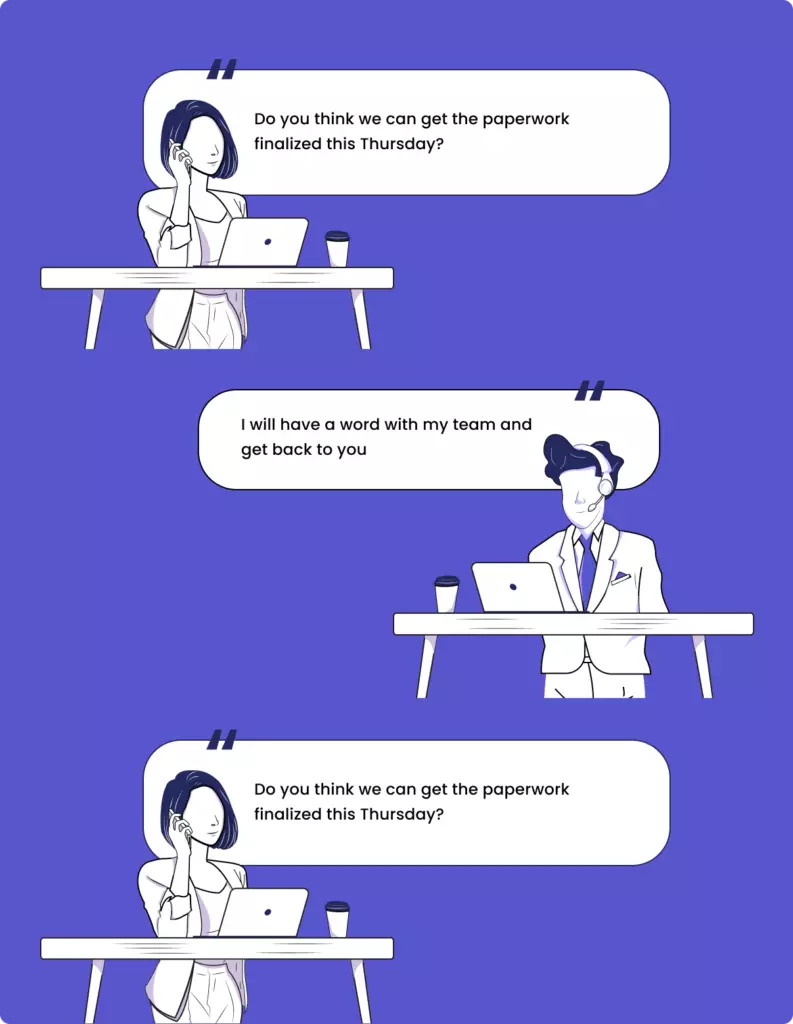
A business relationship thrives when it’s founded on trust and credibility. That’s why testimonial close, as far as closing techniques go, is the real deal. In this technique, instead of talking about the product yourself, share the experiences of actual users who have benefitted from your product.
Testimonials are effective because they come from people who have used the product and fallen in love with it – their opinions are neutral, genuine, and free from any bias.
The other reason this technique works is that when you share the success stories of your users who are similar to the prospects, you ease their concerns and doubts on whether your product can help achieve their business goals.
When should you use it? This sales closing technique comes in handy if you find it hard to gain the trust of your prospects. While providing social proof works whether you are a big or small company, newer companies with fewer customers could leverage social proof to close more deals.
Example: Would you like to learn how a brand just like yours solved ‘problem X’? We could share a copy of the case study.
19) The Thermometer Closing Technique
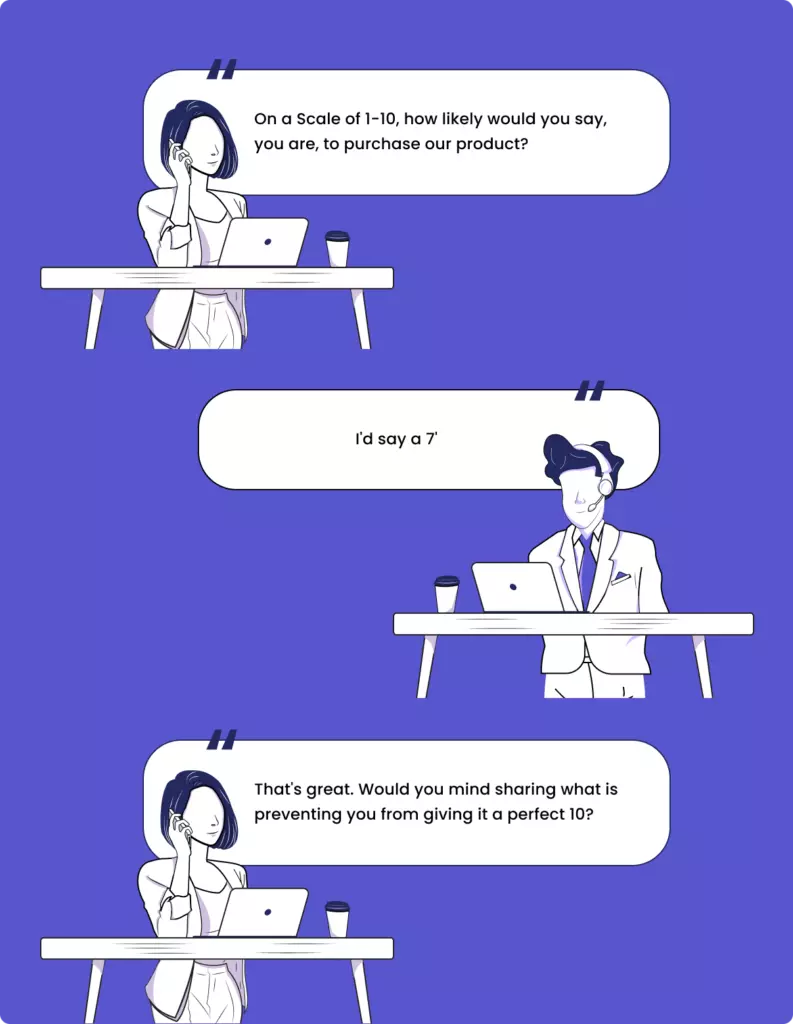
In the ‘Thermometer close’ technique, you gauge how close they are to making a purchase and identify objections that’s holding them back from making a purchase.
In real life, ask your prospects to score their likeliness to purchase your product on a scale of 1 to 10.
If the prospect responds with a score of 6 or lower, it means that they have a significant objection that you need to address to proceed with the deal.
On the other hand, if they give a score over 6 but below 10, they understand the value your product brings but still have a few reservations that you may need to clarify.
When Should You Use This? Use this when you are confused about where your prospect stands and can't fathom how close they are to purchasing your product. The objective is to make the prospects give you a score of 10, which means that they are ready to jump on board immediately; anything less than a perfect 10 indicates objectives you need to overcome.
Example:
Sales Rep: "On a scale of one to ten, how interested are you in our product?"
Prospect: "I'd say an eight.
Sales Rep: "Wow! Great. Just curious, why an eight?"
Prospect: "I love your X, Y, and Z features, and I have a feeling those are the features that are going to help our company the most.
Sales Rep: "Most of our customers love them. These are great reasons, but I'm curious why it's not a ten."
Prospect: "Despite your product having such great features, we feel it's a little too pricey."
Sales Rep: "I agree. But when you start using the product, you will realize that the ROI on the product compared to the price you pay will be so clear that the cost would barely matter. We have never had an existing customer come back and complain about the price."
20) The Puppy Dog Close
The puppy dog close is when you give prospects a taste of your product before they fully commit to it. It allows them to experience the benefits of your product firsthand without any pressure.
The technique got its name from an old sales technique pet sellers used whenever they found their potential customers on the fence about buying puppies. They allowed prospects to take puppies home for a short period of time with the assurance that they could return them any time they wanted. This always worked as almost nobody used to return the puppies they took home as they had gotten attached to their furry friends quickly.
When Should You Use It? This is a trust- and confidence-building closing technique. Depending on the economic climate, the level of market saturation, the kind of solution you are selling, you might need to give your prospects a little extra nudge to choose your solution. The assurance that they can return the solution if they don’t like it upon using it takes the weight off their shoulders and hooks them in.
Example: Why don't you try "product" for 1 month? And there's no catch! It is absolutely free, and you are under no obligation to buy if you don't like what we offer. What do you say?
Tips to win deal negotiations:
- Learn how to craft your position in the deal:
Katie Shonk, an expert in negotiation and a researcher at Harvard Law School, has three study-backed negotiation tips that can increase your chances of winning over deals:
- Focus on their losses not gains. Research suggests that people are more motivated to avoid losses rather than gains because losses weigh heavily on people’s minds. So frame your pitch in a way that highlights their losses rather than focusing on the money they can save.
- Offer concessions in chunks. People prefer to gain money in installments rather than to gain it all at once but lose money in lump sum, research revealed. Conversely, they preferred to lose money in lump sum than to lose money in installments. Therefore, when making an offer of your product or service, offer discounts or freebies in a manner that they gain in installments, and present the gain over a period of time as an individual percentage of savings.
- Reel back on the reasoning. It was found through research, more than 4 decades ago, that a weak justification was more effective than none. But a recent study shows that people tend to rebel against more significant requests with weak justifications. So if you’ve already convinced your prospect of the product and its list of features, you can simply make your first price offer without a reason.
- Mirror your prospect
Negotiation talks are hard on anyone. Put your prospects at ease by mirroring their tone of voice or any verbal or non-verbal cues. Because when you talk like them, it sends the message that you’re both similar in some sense. David Hoffeld, a sales expert, ran a study through MBA students. 67% of them closed more deals using the mirroring technique than their counterparts who didn’t use it.
- Listen Actively
If you listen to your prospects just for the sake of it or to get to the next part of your sales script, you are setting yourself up for failure. When you do this, you unconsciously convey that you are more focused on selling than solving prospects' problems. Trust us, they’ll notice it in your words.
To avoid this, listen actively to your prospects and let them know they are being heard. Here are a few things you can do to make them feel heard:
- Occasionally look into their eyes while talking
- Lean in to show you're interested
- Take notes
- Don't interrupt unless you think they're meandering
- Ask relevant questions when necessary
- Focus on helping rather than selling
Closing doesn't happen overnight. If you breathe down prospects' necks asking for a sale right from the start, you'll lose them even before you know them. So, when you approach a prospect, focus on genuinely helping them. Find their pain points, know their goals, and pitch only if you believe your product or service can make a difference. Also, don't hesitate to go the extra mile to help them even if they aren't ready to buy your product now. Nurture them, so when the right moment comes, they'll choose you.
5. Walking away–is okay
There are prospects out there who won’t buy from you no matter what. Identifying these prospects and walking away from them is crucial to win more deals, according to Ryan Cavezza, Enterprise Account Executive at SetSail. He says, “ Quite frankly, sometimes there are prospects that are just difficult to work with. Maybe their demands or asks are unreasonable or just don’t make sense for your organization - this is when you walk away. It’s likely that they just don’t see the value in your product/service and over time, they’re going to become dissatisfied. This is a lose-lose - for them and for you. If this is the case, it’s okay to walk away. All parties will benefit from this.”
Conclusion
While these various sales closing techniques can help you make a sale, it goes without saying that a single closing technique doesn’t work for every prospect - It’s not magic. It depends heavily on factors like the type of prospect you’re dealing with, their needs, deal size, opportunities and so on.
- Are you confident that the prospect has fully understood what the benefits of your product are? Use The Summary Close technique.
- Is your prospect relentlessly complaining or badgering you for a bargain? Use The Take Away Close technique.
- Does your prospect have a hard time visualizing the benefits of your product? Try The Ben Franklin Close or The Visual Close.
- Want to know how interested your prospect is in your product? Use The Scale Close technique.
- Or use the Something For Nothing Close to entice your prospect into buying.
The art of closing isn’t something one can master over a few days or few weeks, it takes time and practice and none of these sales closing techniques will work efficiently unless and until you have practiced it.

